
Asparagus can be a long-lived and productive vegetable. The highly desirable crowns can provide harvests of delicious stems for over 20 years, provided they are healthy and well-maintained. Unfortunately, one pest that risks the future of your plants is the pesky asparagus beetle.
Asparagus beetles feed on spears and foliage, affecting your harvest and ultimately the long-term health of the crowns. If you grow asparagus and don't want your yield of tender spears to be affected, it pays to know how to spot and control the asparagus beetle.
This guide looks at how to spot asparagus beetles, along with the damage they cause. It also reveals the best methods of combating the asparagus beetle, including one core job you can do in the fall that will impact the population of this troublesome pest.
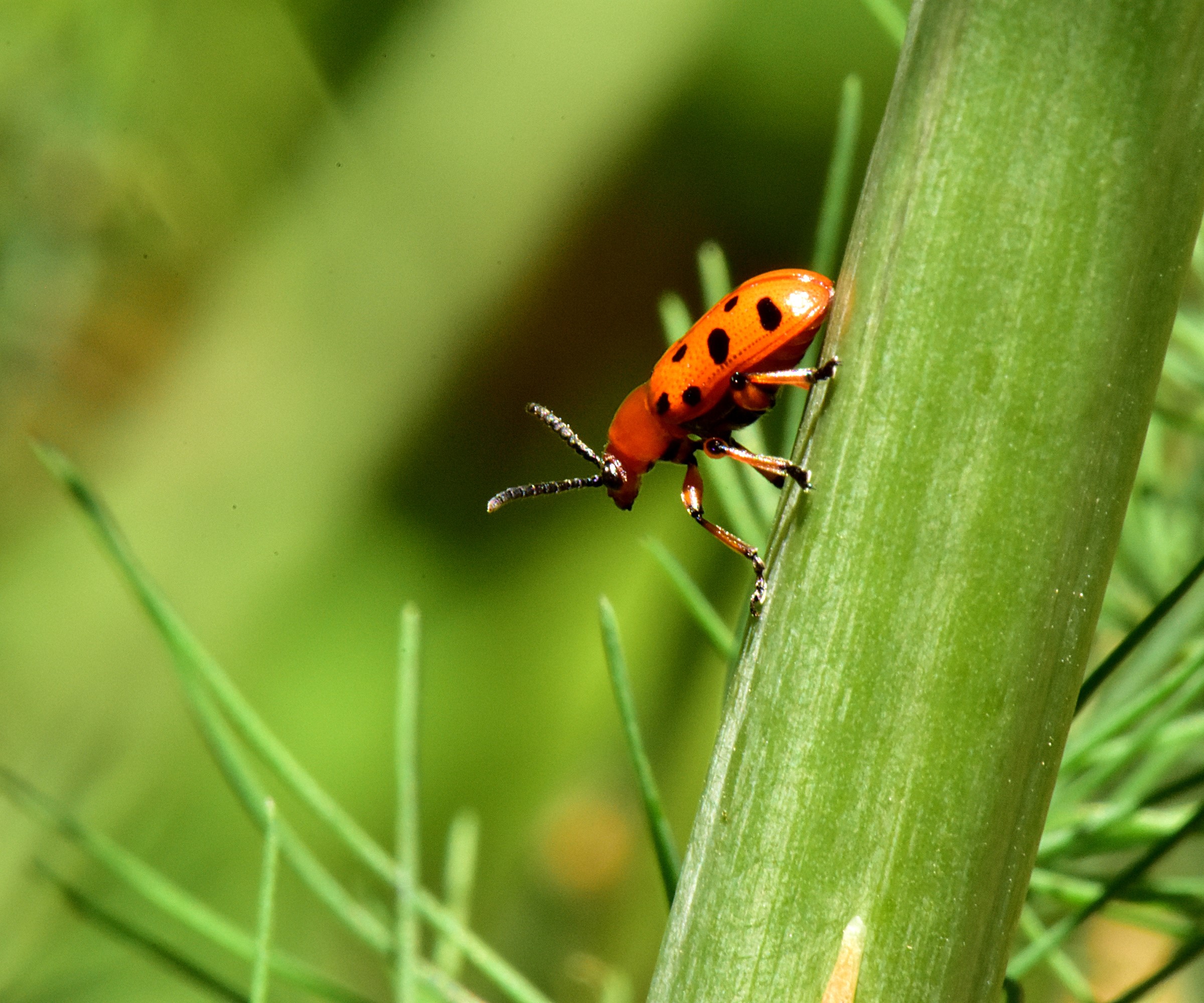
How to get rid of asparagus beetle – in focus
If you're growing asparagus, it's important to be aware of the damage asparagus beetles can cause. I have experienced asparagus beetle on plants before and know that monitoring and acting fast can make a difference. To help me discuss all things asparagus beetle, I also spoke to a gardening and pest expert.
What is the asparagus beetle?
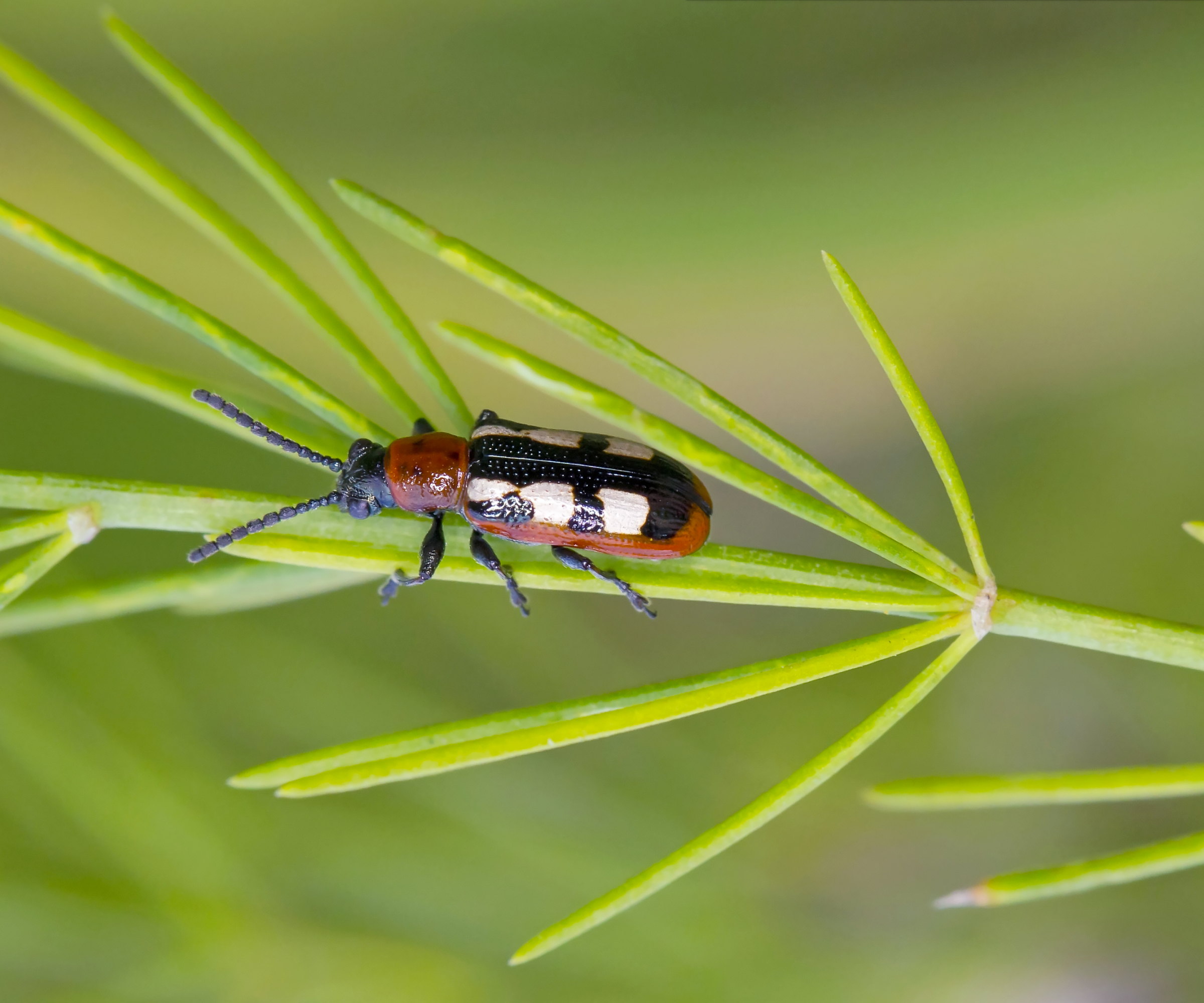
Asparagus beetles are the primary nemesis of the perennial vegetable. There are two types to look out for: the common asparagus beetle (Crioceris asparagi) and the spotted asparagus beetle (Crioceris duodecimpunctata), and the former is the most common asparagus pest you are likely to encounter.
The common asparagus beetle has red-rimmed black wings that feature six white spots, and its larvae have green bodies with black heads. The spotted asparagus beetle has orange bodies with 12 black spots, and the larvae are similarly orange.
Susan Mulvihill, a seasoned grower and author of The Vegetable Garden Pest Handbook, explains that spotted asparagus beetles inflict less damage compared to their common relatives.
'The adult common asparagus beetles and their larvae damage young asparagus spears and ferns through their feeding habits,' says Susan. 'Because the adult beetles and larvae chew on the foliage, this affects the plant’s ability to conduct photosynthesis. When this happens, the plants will experience a decline or even die.'
She adds: 'Both the spotted beetle adults and larvae feed solely on the asparagus berries, so they don’t cause damage to the spears or foliage.'
Asparagus beetles emerge in May or June and will damage plants throughout the rest of the season as they feed on spears and ferns. It is common for the pests to have two life cycles, but this can rise to four or five in climates with long growing seasons.
How to get rid of asparagus beetle
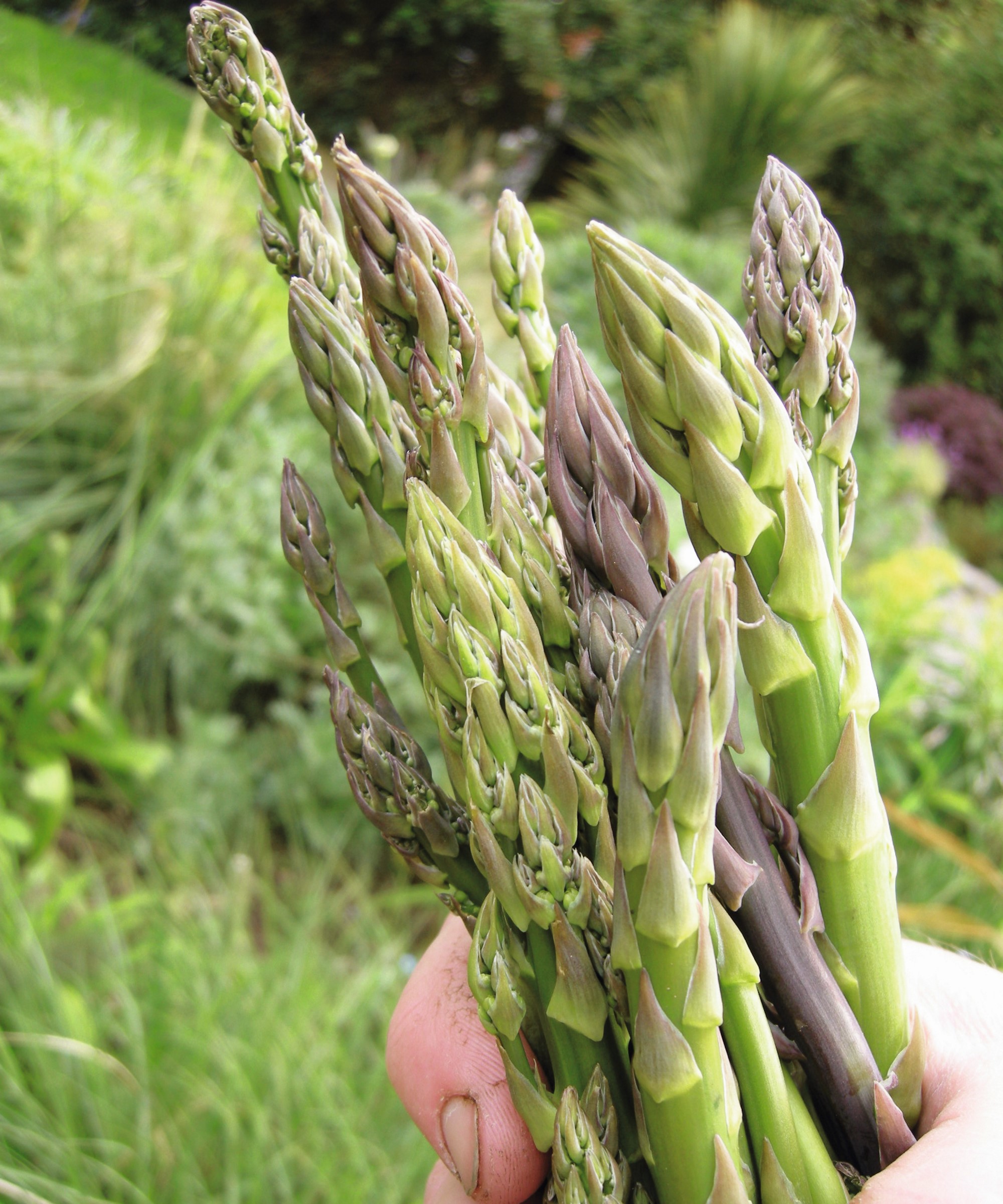
There are five key ways to control asparagus beetle, and we break down each one here:
1. Remove debris in the fall
There is one key thing you can do in the fall to help control asparagus beetle, and it is a quick, super-simple task that you should be doing annually anyway for a healthy and productive asparagus patch.
It is important not to cut back asparagus until the foliage turns yellow in the fall, as leaving the fronds to develop allows the plant to store energy for next year's harvest. You should prune the resulting asparagus fern once the colour changes and it begins to fall naturally, and this will help destroy asparagus beetles.
This is because asparagus beetles overwinter in plant material, and removing this makes it hard for the pests to survive the colder months. Cut down the stems to around two inches from the ground and dispose of them, as Susan recommends: 'Always clean up any garden debris so beetles won't have a place to hide.'
Removing any other piles of stems or leaf litter from near your asparagus patch, as well as the asparagus itself, will impact the asparagus beetle population and prevent them from appearing in huge numbers in spring to wreak havoc again.
2. Hand-pick the pests
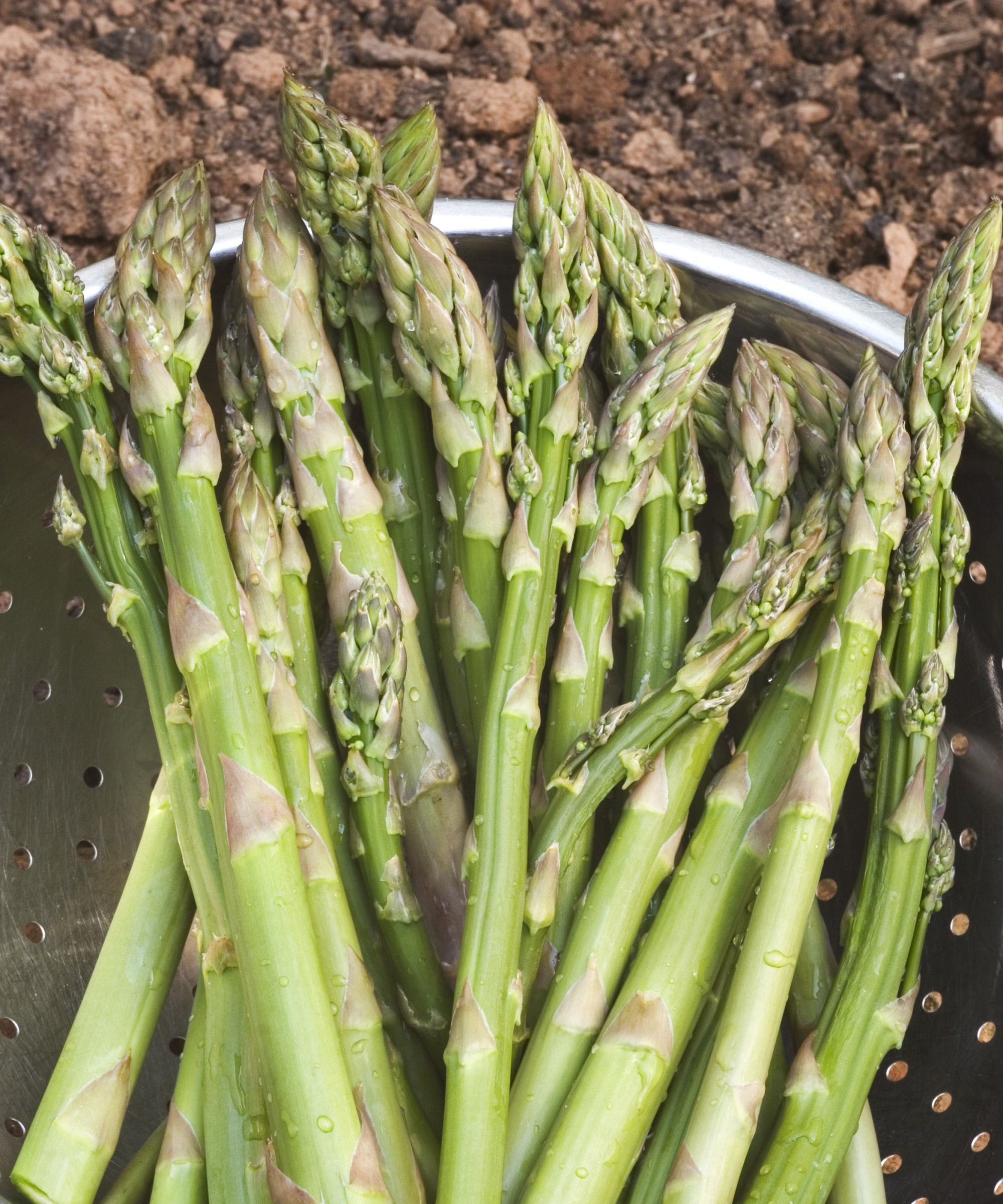
It may be a more squeamish form of asparagus beetle control, but hand-picking the pests as you see them is a reliable way to deal with them. Any larger pests can be controlled in this way, including hand-picking snails to protect plants, but it requires vigilance and dedication.
Once the beetles and larvae start appearing from late spring onwards, closely monitor plants and remove any you see. They can be picked from the plant and dropped into a container of soapy water. Regularly hand-picking asparagus beetles can control their numbers.
It is also advisable to look for eggs – these will appear as dark eggs near the ends of the ferns – and wipe them off.
3. Attract beneficial predators
There are many beneficial insects you can attract to your yard to help combat asparagus beetles. Creating a more wildlife-friendly garden can attract birds, frogs, and predatory insects that will eat the larvae and adults.
'The great news is that asparagus beetles have many natural predators,' says Susan. 'These include lacewing larvae, ladybug larvae, the larvae of parasitic wasps, praying mantids and spiders.'
Companion planting for asparagus can be both beautiful and beneficial. In terms of edibles, tomatoes and eggplant produce solanine, which repels asparagus beetles. There are also flowers such as nasturtiums, zinnias, and cosmos that will attract ladybugs to your yard to eat the pests.
4. Use beneficial nematodes
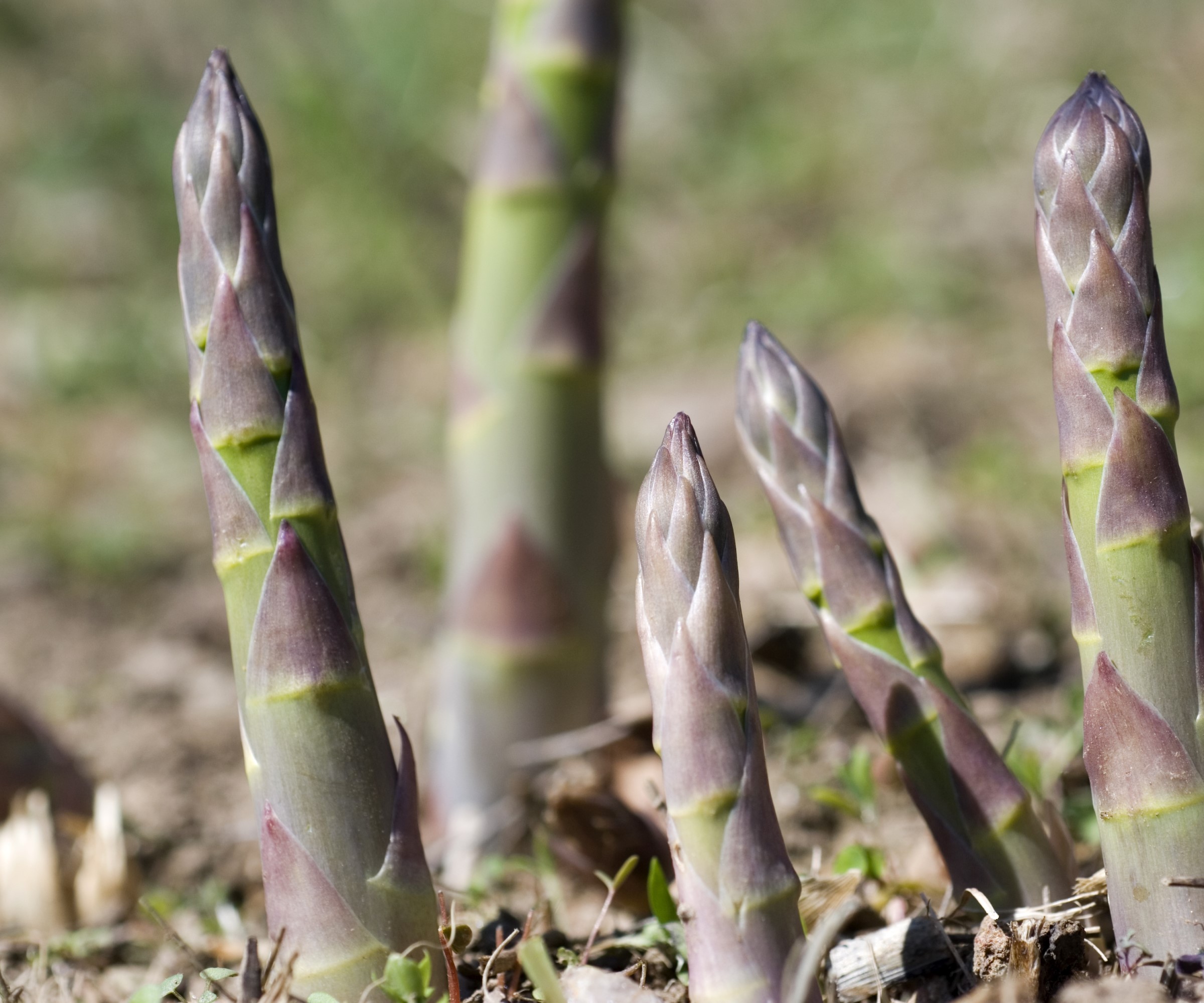
Beneficial nematodes can be used as a natural pest control method to destroy the larval stage of the asparagus beetle. The microscopic soil-borne organisms seek out their prey and release bacteria into them, killing target host insects within 48 hours.
Beneficial nematodes can be applied in the spring or fall and are mixed with water to apply to plants. There are many species of nematodes, but Steinernema carpocapsae nematodes are the ideal type to target asparagus beetle larvae.
You can get Steinernema carpocapsae nematodes at Amazon.
5. Spray plants
Large infestations of asparagus beetles can be targeted by spraying plants with neem oil, while Susan also recommends making a garlic spray to deal with the pests.
Some chemicals can be used as a last resort, but pesticides can be toxic to pollinators and beneficial predators. You can use pyrethrin, but Susan highlights spinosad as another potential option.
You can get spinosad insecticide at Amazon; however, Susan warns: 'Always follow the label directions for the best results and use the minimum amount suggested.'
FAQs
Does diatomaceous earth kill asparagus beetles?
Diatomaceous earth is a natural substance derived from the remains of hard-shelled microscopic aquatic organisms called diatoms. The microscopic shards of the material cut insects and cause them to dehydrate. It can be used to control the asparagus beetle.
Always use food-grade diatomaceous earth, which is available from Amazon. Place a thin layer of the powder on stems, leaves, and soil where the asparagus beetles are active.
Can you eat asparagus beetle eggs?
If you harvest asparagus spears with asparagus beetle eggs on them, you can wipe the eggs off and eat the spears. The eggs themselves will not harm if consumed, but it is best to remove sections with eggs or clean the stems thoroughly before cooking the asparagus.
If your asparagus crowns start to disappoint and produce fewer, thinner stems, it could be because the plant has become overcrowded. You can rectify this by dividing asparagus in late fall, after you cut back the plant, or in early spring, before it starts to produce that season's spears.
Carefully dig up the crown and divide it into sections. You can plant the new asparagus pieces at least 18 inches apart in a sunny spot with rich, well-drained soil.
This spray is made of natural ingredients and can be used to combat many vegetable pests, including asparagus beetles.







